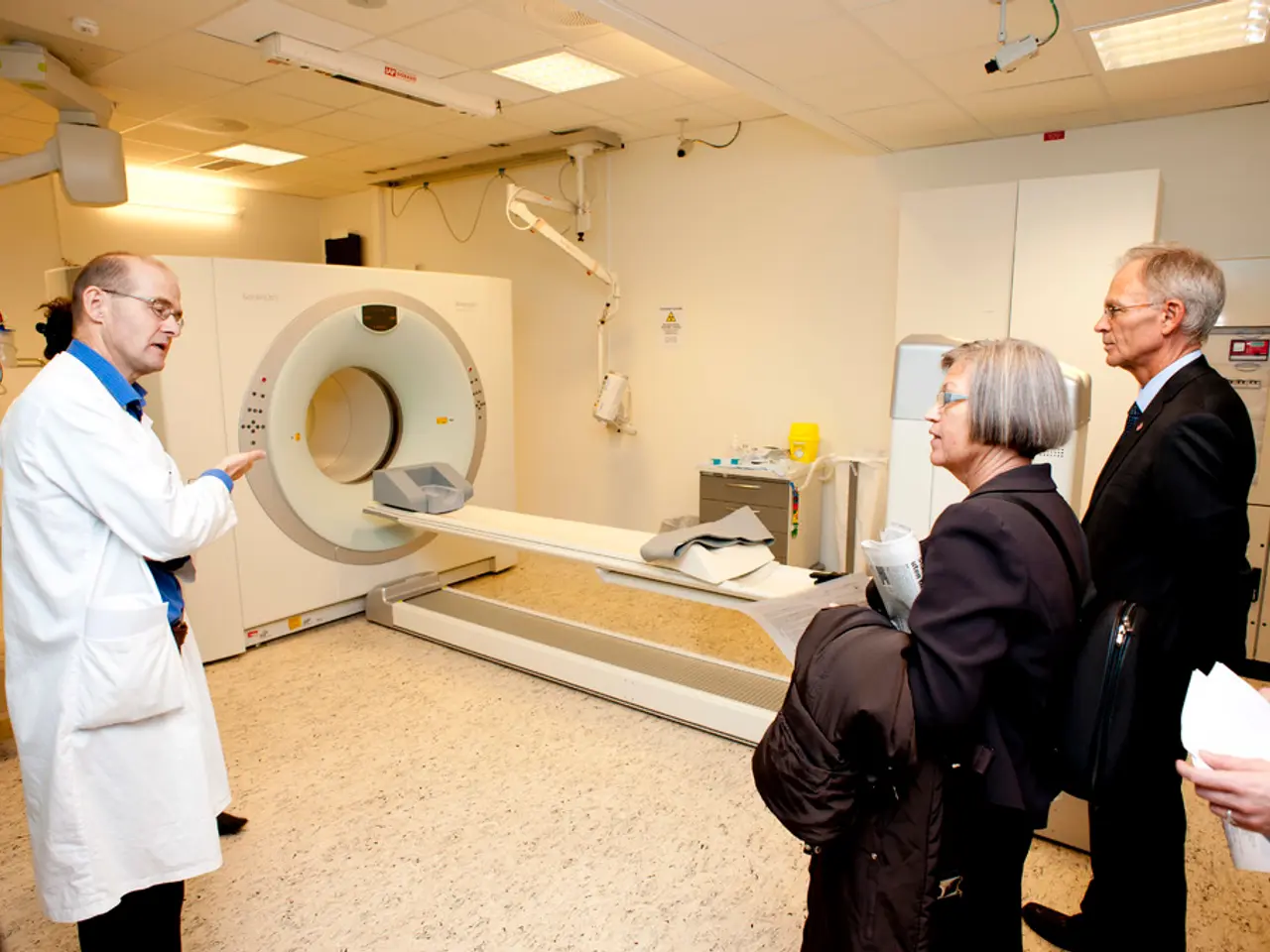Initiate Cardiopulmonary Resuscitation (CPR) upon determining an adult's unresponsiveness: This is the recommended action.
In a healthcare setting, dealing with an unresponsive adult patient requires immediate attention and a structured approach. Here's a step-by-step guide to help you navigate the situation effectively.
1. Ensure Scene Safety
Before approaching, it's crucial to ensure the environment is safe for both the rescuer and the patient. Avoid potential hazards such as traffic, fire, or unstable structures.
2. Assess Responsiveness
The first step in assessing an unresponsive adult patient is to determine if there is any wakefulness. Tap the patient’s shoulder and shout, “Are you okay?” If there is no response, use the AVPU scale to classify the level of consciousness:
- Alert—awake and responsive
- Verbal—responds to voice
- Pain—responds only to painful stimuli
- Unresponsive—no response to any stimuli
3. Check Airway
If the patient is unresponsive, immediately assess and open the airway using the head-tilt-chin-lift or jaw-thrust maneuver to prevent airway obstruction. Use adjuncts like oropharyngeal or nasopharyngeal airways if needed.
4. Assess Breathing and Circulation
Look, listen, and feel for breathing; if absent or abnormal (e.g., agonal gasps), be prepared to start resuscitation. Check for a pulse quickly (no more than 10 seconds).
5. Activate Emergency Response
Call for emergency help immediately if the patient is unresponsive and not breathing normally.
6. Begin CPR if Necessary (Follow C-A-B Sequence)
If the patient is unresponsive and not breathing normally, start CPR using the C-A-B sequence:
- Compressions: Place hands in the center of the chest and give 30 firm, fast compressions at 100–120 per minute.
- Airway: Open the airway again (head-tilt-chin-lift)
- Breathing: Provide 2 rescue breaths, ensuring visible chest rise
- Continue the cycle until advanced help arrives or patient responsiveness returns.
7. Ongoing Monitoring and Support
Continuously monitor the patient’s airway, breathing, and circulation. Be prepared to use oxygen or advanced airway management as per healthcare protocols.
Effective communication and providing relevant information to medical professionals are key in providing the best possible care for an unresponsive adult patient. Consulting with medical professionals is crucial for ensuring appropriate care, receiving medical advice, accessing specialized knowledge, and confirmation and validation of findings. Time is of the essence when dealing with an unresponsive adult patient, so it's essential to act quickly while being careful not to cause harm to the patient during these stimuli. Stimuli include gentle taps on the shoulder or light pressure on the sternum. More aggressive stimuli such as a sternal rub or a gentle pinch on the arm may be used if there is no response to initial stimuli.
In the midst of an unresponsive adult patient situation, it's pertinent to seek out possible connections between science and health-and-wellness, such as understanding the effectiveness of various therapies-and-treatments on mental-health conditions or analyzing the impact of fitness-and-exercise on overall patient recovery. It's essential to keep in mind that swift action is crucial, but avoiding harm is equally important when administering stimuli to assess responsiveness.




